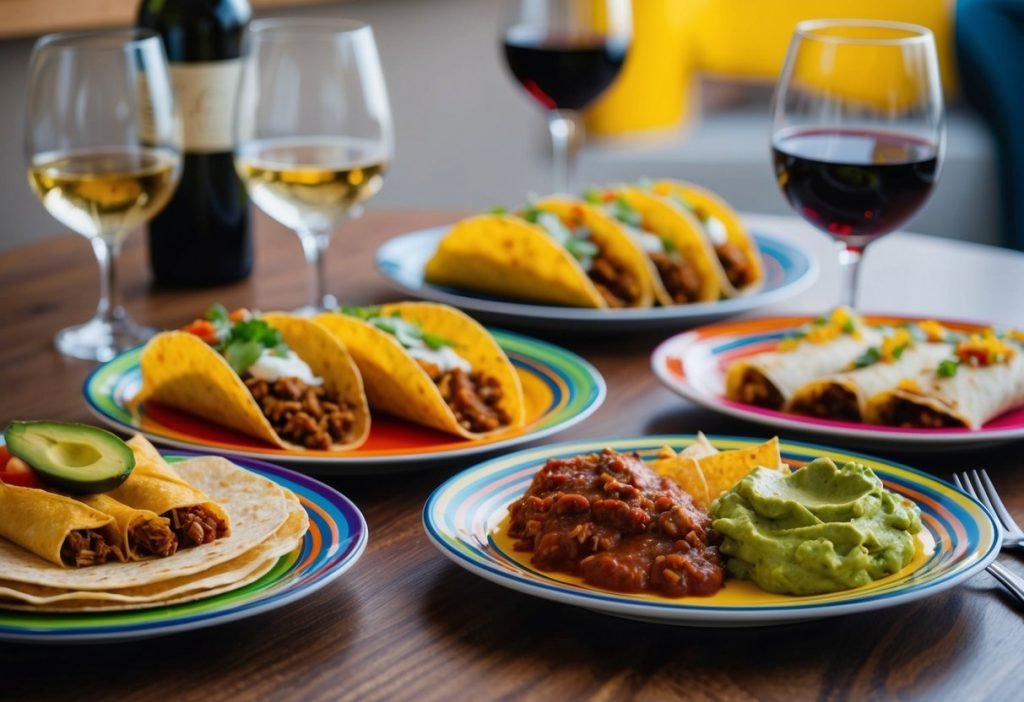A pizza night is a simple pleasure, yet the right wine can elevate the experience significantly. Choosing wines that complement the flavors of pizza can enhance both the food and the enjoyment of the evening. Whether the pizza features rich cheese, spicy pepperoni, or fresh vegetables, the right pairing can make a notable difference.

Wine enthusiasts know that not all wines are created equal when it comes to pairing with pizza. Understanding the basics of flavor profiles can guide selections, ensuring each sip works in harmony with the dish. From refreshing whites to robust reds, there is a perfect wine for every pizza topping.
Exploring the best wines for pizza nights opens up a world of delicious possibilities. This exploration not only enhances the meal but also makes for an engaging culinary experience. Finding the ideal match can transform a casual dinner into a memorable occasion.
Understanding Pizza & Wine Pairings
Pizza is a versatile dish that pairs well with a variety of wines. Recognizing the flavor profiles and fundamental pairing principles is essential for enhancing the dining experience.
Flavor Profiles
Different pizzas have distinct flavor profiles. A classic Margherita features fresh tomatoes, mozzarella, and basil, offering a balance of acidity and creaminess. But pepperoni pizza, with its spicy and savory components, demands a different wine approach.
Flavor Combinations:
- Classic Tomato Sauce: Pairs well with zesty whites like Sauvignon Blanc or fruity reds like Chianti.
- Meat Toppings: Rich wines such as Cabernet Sauvignon complement the bold flavors.
- Vegetarian Options: Light-bodied wines like Pinot Grigio or Rosé enhance the freshness of vegetables.
Understanding these combinations allows for a more enjoyable meal.
Pairing Basics
When pairing wine with pizza, consider the weight of the dish and the wine. A heavier pizza with lots of toppings requires a fuller-bodied wine, while lighter pizzas work well with lighter wines.
Basic Tips:
- Match the wine’s acidity with the dish’s acidity.
- Consider the flavors of the toppings to highlight or contrast with the wine.
- Experiment with different wine varietals to discover personal preferences.
These pairing principles help create harmonious combinations that elevate the pizza night experience.
Top Wine Varieties for Pizza
Selecting the right wine for pizza can enhance the dining experience. Different types of pizzas pair well with specific wine varieties based on their ingredients and flavors.
Red Wines for Meat Pizzas
Meat pizzas, such as pepperoni or sausage, benefit from bold red wines. Chianti, with its high acidity, complements the rich flavors of tomato and meat. Alternatively, Zinfandel offers fruitiness and spice, enhancing the savory elements.
Cabernet Sauvignon is another excellent choice, particularly for pizzas loaded with meats. Its robust profile can stand up to heavy toppings.
For a lighter option, Merlot provides smooth tannins and fruit-forward notes that balance meats without overwhelming the dish.
White Wines for Seafood & Veggie Pizzas
White wines are ideal for seafood and veggie pizzas, bringing freshness to the table. Sauvignon Blanc is highly recommended due to its crisp acidity and citrus notes. It pairs particularly well with prawns or clams on a pizza.
Pinot Grigio is another option, offering lightness and a clean finish that complements vegetables such as artichokes or zucchini.
For those looking for a richer white, Chardonnay—especially unoaked—can fit nicely with creamy sauces and roasted vegetables. Its balance enhances the taste without overpowering the pizza’s flavors.
Rosé and Light Reds for Margherita Pizza
Margherita pizza, with its simple ingredients, calls for delicate wine choices. Dry Rosé is an ideal pairing, as its refreshing acidity complements the mozzarella and basil without overshadowing their freshness.
Pinot Noir is a suitable light red option. Its subtle fruitiness and earthy notes enhance the pizza’s flavors without being too heavy.
Another excellent choice is Gamay, known for its low tannins and bright fruit character. It pairs well with the tomato sauce while maintaining a lively palate.
These wine selections elevate the pizza night experience by enhancing the flavors of each dish.
Serving & Presentation Tips

Proper serving and presentation can enhance the enjoyment of wine with pizza. Attention to temperature, glassware, and pouring etiquette can elevate the experience significantly.
Wine Serving Temperatures
The ideal serving temperature for wine affects the aromas and flavors. Here are some guidelines:
- Red Wine: Serve at 60-65°F (15-18°C) for optimal flavor release.
- White Wine: A cooler range of 45-55°F (7-13°C) preserves crispness.
- Sparkling Wine: Chill to 40-50°F (4-10°C) to maintain effervescence.
Use a wine thermometer for accuracy. If wine is too warm, chill it in an ice bucket for about 15 minutes. For whites and sparkling wines, a bit of extra chilling can enhance freshness, making them more appealing alongside pizza.
Glassware Recommendations
Choosing the right glassware can significantly impact the tasting experience. Ideal glassware includes:
- Red Wine Glasses: These have a wider bowl, allowing for aeration and aroma concentration.
- White Wine Glasses: Typically narrower to maintain cooler temperatures and direct aromas.
- Champagne Flutes: These enhance the bubbles and preserve the wine’s effervescence.
It’s advisable to use clean, dry glasses. Washing them with soap and rinsing thoroughly ensures no residues affect the flavor. Holding the glass by the stem prevents transferring heat from the hand to the wine.
Wine Pouring Etiquette
Pouring wine correctly is essential for both aesthetics and taste. Consider these practices:
- Fill to One-Third: Pour wine to about one-third of the glass to allow room for aeration and to minimize spills.
- Pouring Angle: Hold the bottle at a slight angle while pouring to ensure smooth flow.
- Avoiding Drips: To prevent dripping, tilt the bottle upright quickly after pouring.
Offering tastings of different wines can also enhance the experience. Guests should feel comfortable asking for more or switching wines as they enjoy their pizza.



